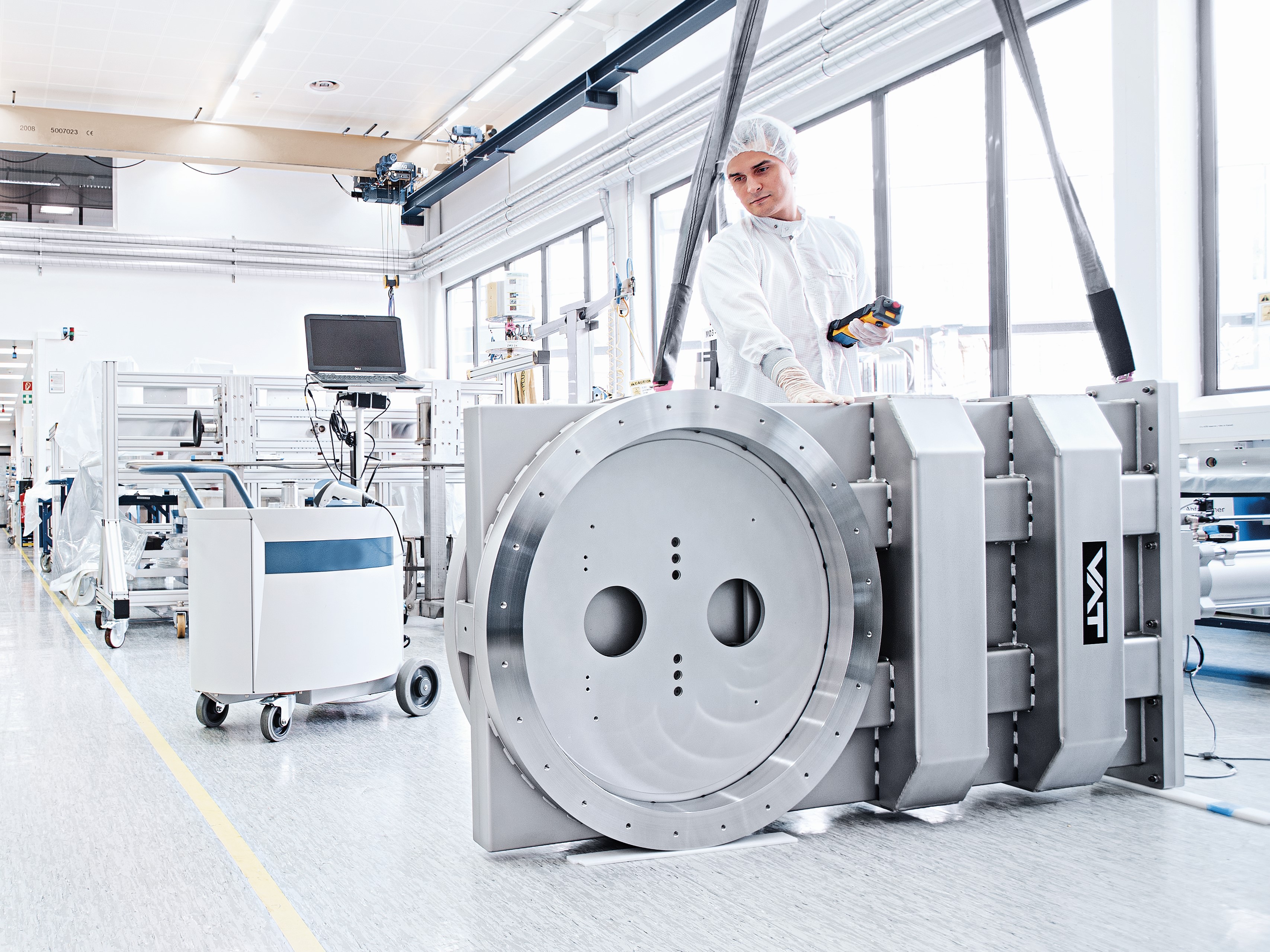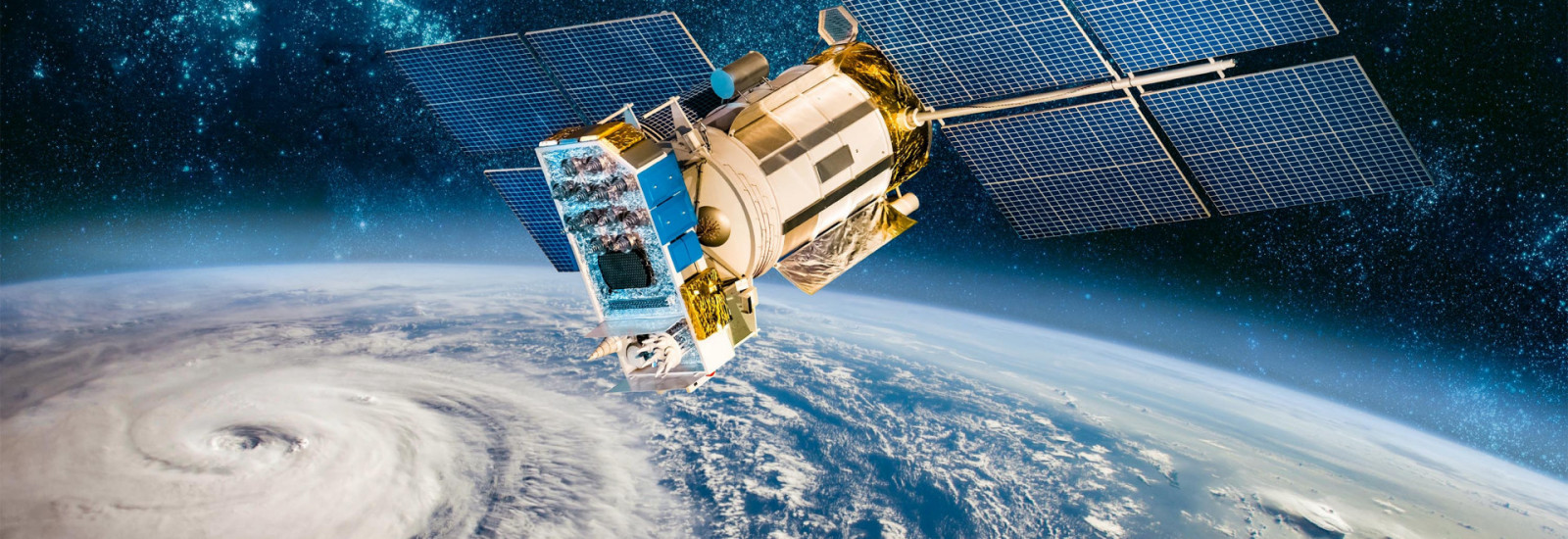A space simulation center consists primarily of thermal vacuum chambers (TVC) used to simulate conditions found in space. TVCs are mainly used to test satellites or satellite subsystems in a fully controlled environment that accurately recreates the conditions of the space by controlling the two main environmental parameters: temperature and pressure.
No lift-off without testing
Testing a satellite before the launch into space is vital to the success of the satellite’s mission. Testing in realistic conditions can help identify and avoid the most common risks to a satellite: the freezing or overheating of satellite components. The most dangerous is cosmic radiation because, unlike Earth, space lacks a protective atmosphere. Near Earth, the sun is the most significant source. In addition to electromagnetic radiation, it also emits high-energy ionized particles. Both can directly damage components.
Depending on the satellite’s orbit, temperatures can vary wildly. Satellites in a 90-minute orbit face temperatures of around +150°C when exposed to sunlight and temperatures around -190°C when shaded from the sun. While the satellite is subjected to temperature extremes, RF (radio frequency) signals are transmitted across the TVC through dedicated wave guides to further test durability. Finally, it is good to keep in mind that satellites in space – and the TVC – are subject to pressures below 10-6 mbar in space, which is less than one billionth of the atmospheric pressure on Earth.
Key components of a TVC
The three main components of a TVC are the outer body, the thermal systems and the vacuum system.
The outer body is a stainless steel cylinder. Its difficult task: it must withstand the pressure difference between the earth's atmosphere and simulated space while ensuring maximum purity. All welding work and surface finishing are carried out with the utmost care to minimize leakage rates and outgassing. This is a prerequisite for creating a high vacuum and achieving the required clean room conditions in the TVC.
Thermal systems, also called shrouds, heat up or cool down the simulation room. They generate varying temperatures, usually between -100°C and +100°C. Different thermal systems are used depending on the specific test application.
The vacuum system comprises a series of pre-vacuum pumps for generating the rough vacuum (approx. 1ₓ10-2 mbar), high-vacuum pumps for generating the required vacuum in the range from 1ₓ10-6 mbar to 1ₓ10-8 mbar, and control and isolation vacuum valves.
VAT's large-format 19 series gate valves are usually used in TVCs upstream of large cryogenic vacuum pumps in order to be able to disconnect the pump for service or regularly required regeneration cycles. Their size is due to the large vacuum volume that needs to be generated in the TVC in the shortest possible time. Due to the large opening of the cryogenic pumps and thus also of the gate valves, any air molecules remaining after rough evacuation in the transition from vacuum to high vacuum are more quickly trapped, compressed and exhausted from the TVC.
In addition, the Series 19 large gate valves can be used as isolation valves between vacuum chambers to allow subdivision of the TVC.

Due to the VATLOCK technology used the Series 19 gate valves are mechanically locked in the closed position. This prevents a loss of vacuum, e.g. in the event of a power or compressed air failure. The gate valves open and close in a damped and contact-free manner, thus avoiding friction points and closing impacts. On the one hand, this minimizes the risk of particles being released in the TVC, and on the other, the contact-free opening and closing of VATLOCK technology reduces energy consumption, because less friction means less energy.
In addition, smaller gate and angle valves are part of the vacuum system and ensure that the TVC functions reliably.
Thomas Bottlang, VAT Sales Manager, succinctly summarizes the importance of the valves: "In addition to their reliability, the vacuum valves used must above all meet the special cleanroom conditions of TVCs, this is crucial for TVC operators."
VAT supplies the 19 series in three versions for rough, high and ultra-high vacuum applications, up to a diameter of 2000 mm as standard. However, larger sizes are also available upon request.
